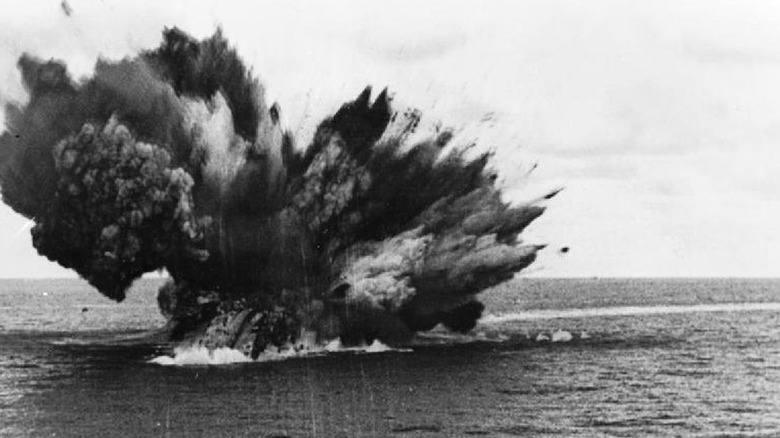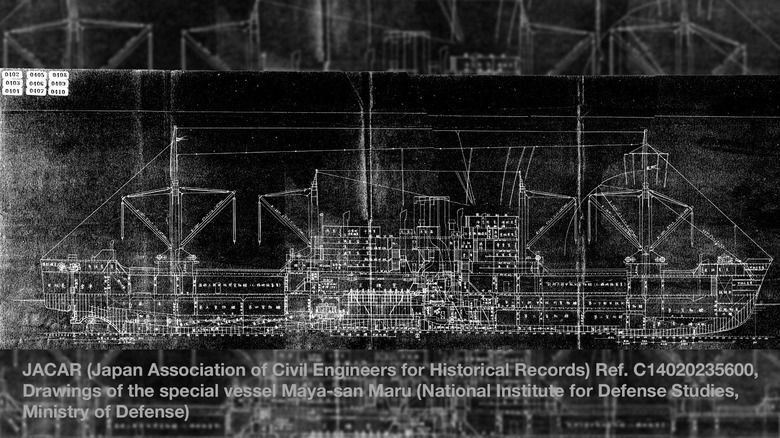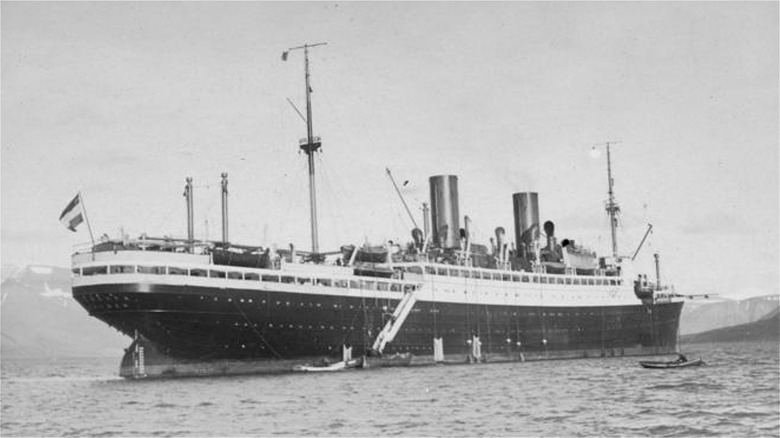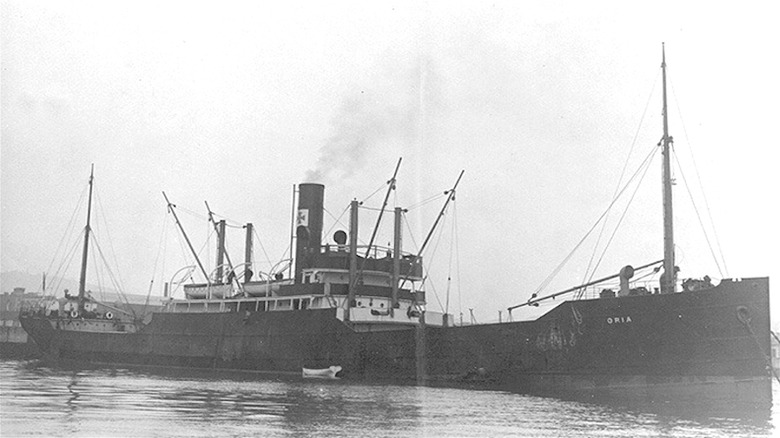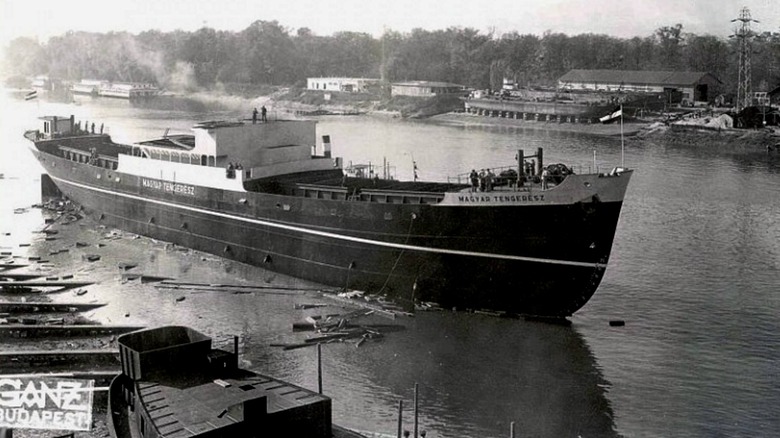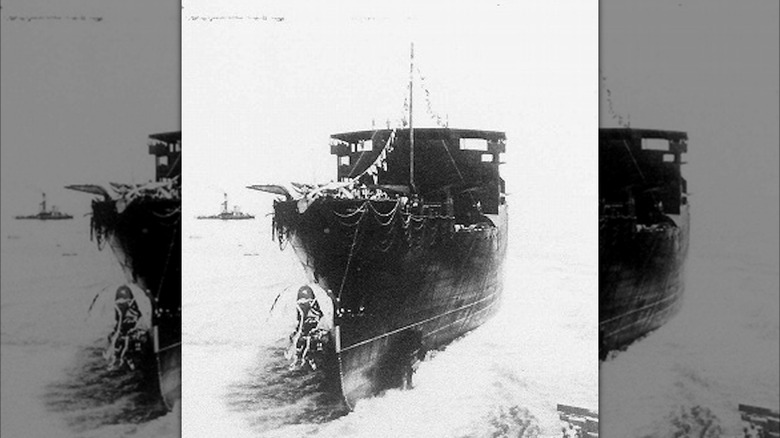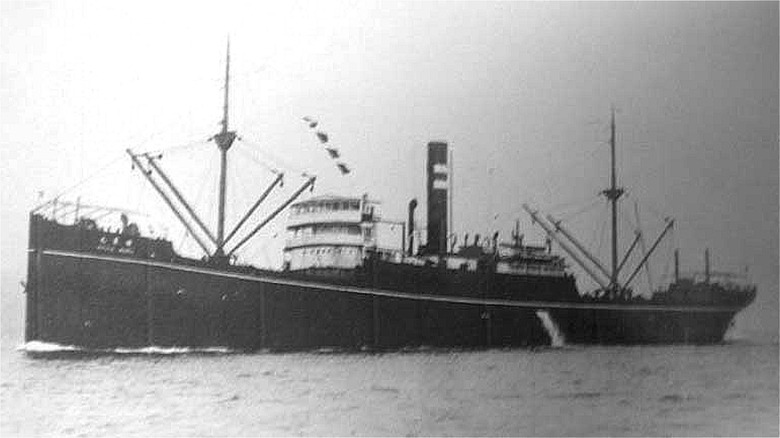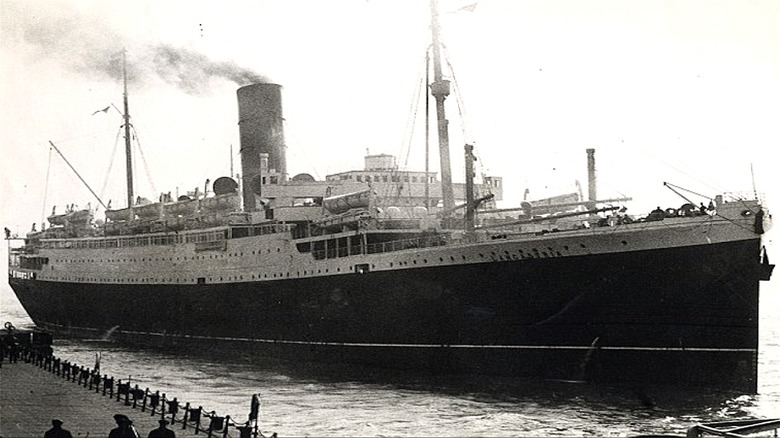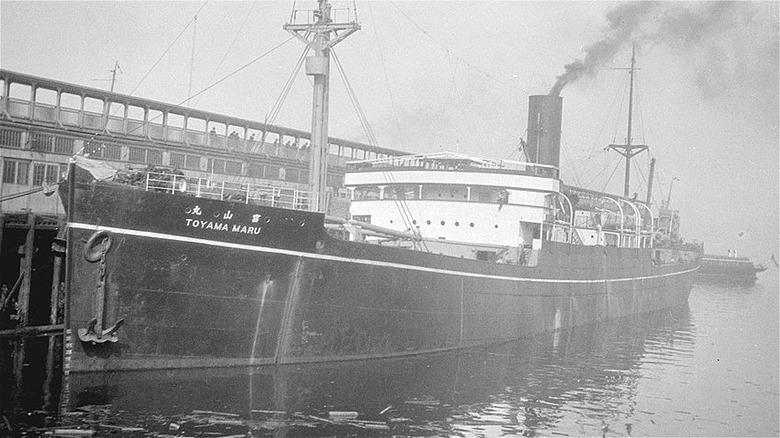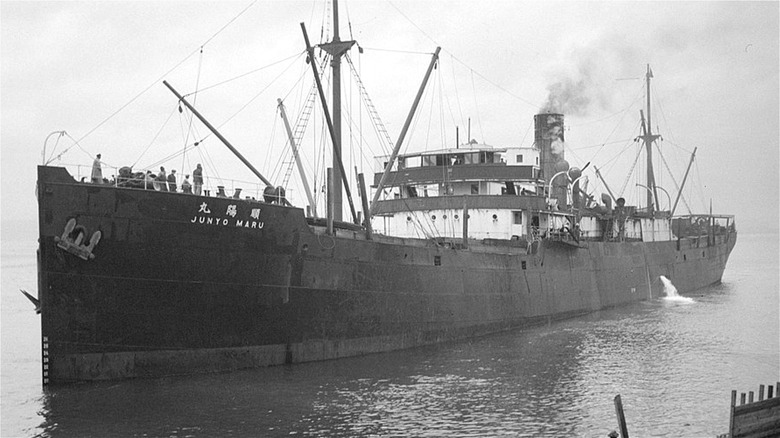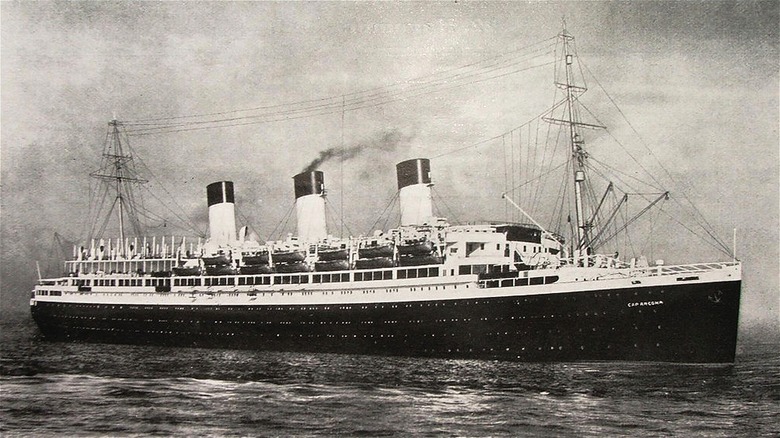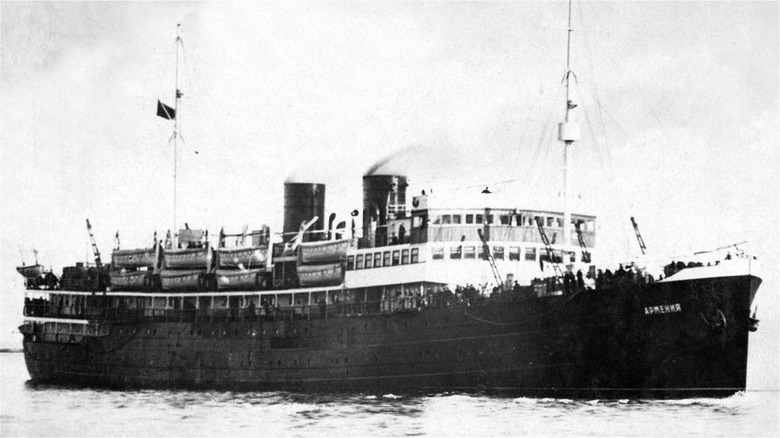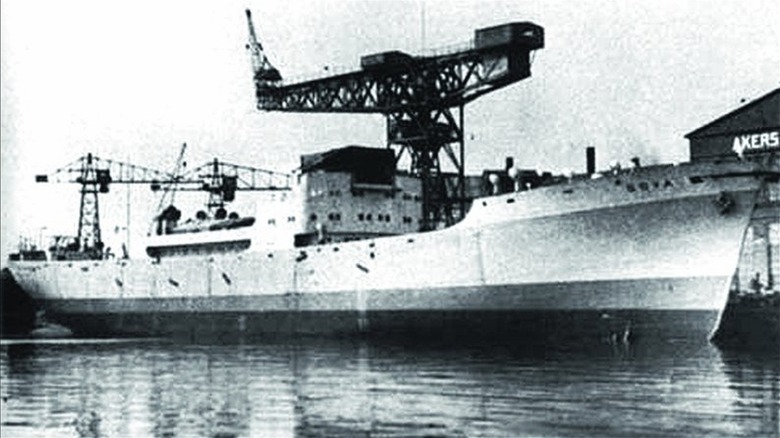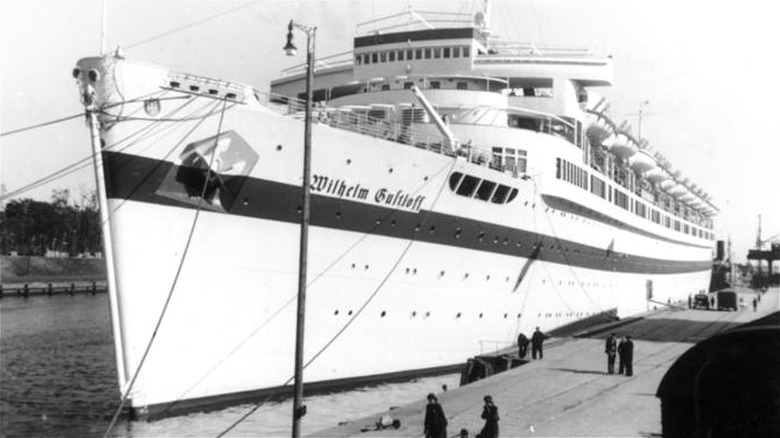The 13 Deadliest Shipwrecks Of WWII
Every shipwreck in this list killed more people than the September 11 attacks, and yet few people know about them. These were not legendary World War II battleships but humble cargo vessels crammed with men, women, and children. This was the grim reality of the Second World War, a conflict that killed some 60 million people on land, in the air, and out at sea.
Approximately 15,000 ships sank during the conflict — including 3,800 in the Pacific and 3,675 in the Atlantic. These catastrophes plunged half a million people into the ocean and killed tens of thousands on every side. Some examples, namely the RMS Lancastria, were so awful that state media censored coverage to preserve morale.
Tragically, several of the worst maritime disasters killed not only fighting men but thousands of refugees and concentration camp prisoners, some in the final weeks and days of the war. Here are the 13 deadliest shipwrecks of WWII.
[Featured Image by Imperial War Museum via Wikimedia Commons | Cropped and scaled | Public domain]
Mayasan Maru
The Mayasan was one of the Imperial Japanese Army's 10 Maru-class depot ships capable of transporting thousands of men and up to 20 Daihatsu landing craft. At 11,910 tons, it was among the nation's largest cargo ships, but it could still reach 20.8 knots courtesy of 10,800-horsepower diesel engines. For defense, the Mayasan had six 75mm AA guns and 20 Hotchkiss 13.2mm machine guns.
The Mayasan was laid down in August 1941 and completed over a year later on December 14, 1942. It maintained a busy schedule over the next two years, crossing Japanese Empire waters and engaging numerous enemy vessels, such as the USS Plunger and USS Flying Fish submarines. At 8:00 a.m. on November 17, 1944, the Mayasan steamed toward the Zhoushan Islands in the East China Sea. It carried 4,387 soldiers, 740 specialists and replacements, and 88 army communications school graduates. Ten hours later, at around 6:15 p.m., USS Picuda torpedoed the Mayasan 100 miles west of Jeju Island. It sank in two-and-a-half minutes and lost 3,536 men.
[Image credit for image above: JACAR (Japan Association of Civil Engineers for Historical Records) Ref. C14020235600, Drawings of the special vessel Maya-san Maru (National Institute for Defense Studies, Ministry of Defense)]
SS Steuben
The SS Steuben was a German passenger ship built in 1922. It served as a transatlantic liner under the name Muenchen before catching fire and sinking in New York Harbor. A massive salvage effort repaired the ship to working order and it returned to passenger duties as General von Steuben until 1938, when it entered military service as SS Steuben.
In 1945, the Steuben took part in Operation Hannibal, the naval component of the East Prussia evacuation. From January to May, the German navy removed some 1.5 million refugees, shipping them out of the Bay of Danzig. However, the logistical feat included several of the worst maritime disasters in history, and the Steuben was among them.
Steuben departed Pillau on February 9, its destination Swinemunde. It carried 2,800 wounded soldiers, 1,500 refugees, 320 nurses, 165 crewmen, and 30 doctors. Many others boarded in the chaos, too. On February 10, minutes after midnight, the Soviet submarine S-13 struck the Steuben with two torpedoes, sinking it in seven minutes and killing around 3,608 people. In May 2004, Polish divers found the wreck 150 feet under the surface, scattered with human remains.
[Featured Image by Bundesarchiv, N 1572 Bild-1925-079 / Fleischhut, Richard via Wikimedia Commons | Cropped and scaled | CC-BY-SA 3.0]
SS Oria
The Oria cargo ship was originally the property of Norwegian shipping company Fearnley & Eger, which commissioned it in 1920. The vessel arrived in Casablanca on June 19, 1940, two months after the fall of Norway. Vichy France commanded it until 1942 when it entered the German Mediterranean Shipping Company (MMR).
On September 11, 1943, almost two months after Mussolini's fall, an Italian garrison surrendered the Dodecanese Islands to German forces, which then defeated Allied attempts to take the islands in the subsequent Dodecanese campaign. By the winter, Germany began shipping thousands of prisoners to the Greek mainland, often in crowded ships with no safety practices. The Oria was one such vessel, and it departed the islands bound for Piraeus in February 1944. As it neared the Saronic Gulf, a navigation error caused the ship to run aground off the coast of Attiki. It later capsized and sank in around 100 feet of water, killing over 4,000 people. Bodies washed up on nearby beaches for months after the tragedy.
[Featured Image via Wikimedia Commons | Cropped and scaled | Public domain]
MV Teja
Built in 1942 by the Hungarian government, the MV Magyar Tengeresz was a 2760-ton cargo ship capable of 11 knots. The Germans commandeered the vessel in 1944, renaming it MV Teja and sending it to the Black Sea. Here, it took part in Operation 60,000, a German and Romanian evacuation of Sevastopol, which the Red Army captured on May 9.
The same day, Teja and its sister ship MV Totila departed from Constanţa on the Romanian coast and approached Sevastopol on May 10. They were to collect men and material waiting for them on Crimean beaches. The first attack came at 05:22 a.m. when 20 Soviet aircraft attacked the ships with little impact. Teja and Totila continued their journey and collected thousands of soldiers who approached them in assault boats.
At 08:30 a.m., Teja and Totila began the 230-mile journey back to Constanta with an escort of three minesweepers. However, one hour later, 21 Ilyushin Il-2 attack planes swept over the convoy, destroying Totila and killing around 5,000. Hours later, at around 14:45, a further 11 attack aircraft descended on the Teja, sinking her with a loss of some 4,000 to 5,000 people. The minesweepers saved around 400 men before continuing to Constanta.
Tamatsu Maru
Like its sister ship the Mayasan Maru, the Tamatsu Maru was an 11,910-ton cargo ship with 10,800-horsepower diesel engines and 26 guns of varying caliber for self-defense. It made its maiden voyage on February 13, 1944, and navigated waters around Singapore, the Philippines, and the Korean peninsula. The vessel escaped numerous attacks during its six-month career, including a barrage of torpedoes from USS Apogon on July 12.
The Tamatsu luck ran out in the early hours of August 19, 1944, when Commander Gordon Underwood of the USS Spadefish — a Balao-class submarine — was hunting for enemy ships near the Scarborough Shoal in the West Philippine Sea. At 3:33 a.m., Underwood fired six torpedoes at the Tamatsu, scoring two hits and sending it to the seafloor, killing up to 4,755 men. Nine hours later, an escort passing the attack site found oil, debris, and around 2,000 bodies floating on the surface. This grim spectacle reoccurred decades later when high spring tides disturbed Japanese war graves and sent 26 skeletons to the surface.
[Featured Image via Wikimedia Commons | Cropped and scaled | Public domain]
Ryusei Maru
The Ryusei Maru began life not in Japan but in the offices of Fred Olsen, a Norwegian shipping company. In 1911, Olsen commissioned the Tyne Iron Shipbuilding Company to build a 4,797-ton cargo ship named SS Bra-Kar. Over the next 27 years, the steel screw-steamer went by SS Havo and SS Mabuhay before Far Eastern SS Co Ltd, its third owner, sold the ship to Matsumoto Masaiti, who named it Ryusei. By 1941, it was part of the Imperial Japanese Navy's Maru cargo fleet. Ryusei joined many convoys during its military service, including a patrol in May 1942 in which the USS Grenadier torpedoed its sister ship Taiyo Maru, sinking it and killing 1,204 people.
On the afternoon of February 24, 1944, the Ryusei Maru departed Surabaya, Java, and headed east to the Moluccas islands as part of a convoy with Tango Maru, two minesweepers, and a subchaser. The Ryusei was carrying about 6,600 men — 1,244 Japanese, 2,865 Indian soldiers, and 2,559 Romusha laborers. At 8:45 p.m. the following evening, the USS Rasher intercepted the convoy and launched a devastating attack, sinking the Tango Maru and killing up to 3,000 people. Later, at 10:25 p.m., Thresher targeted Ryusei, splitting her in two with three torpedo strikes. Some 4,998 people died.
[Featured Image via Wikimedia Commons | Cropped and scaled | Public domain]
RMS Lancastria
The sinking of the RMS Lancastria is the worst disaster in British maritime history. An ocean liner, it was requisitioned as a troop ship in 1939 and sent to Norway in April 1940, evacuating troops from Harstaad. On June 17, authorities ordered the Lancastria south to French waters off the coast of St. Nazaire. It was Operation Aerial, the evacuation of western France, and the Lancastria took 5,000 to 9,000 people — far above its capacity. At 1:00 p.m., a German plane bombed the vessel's bridge, damaging but not destroying the 16,243-ton ship. Captain Rudolf Sharp wanted to sail for Britain, but he needed an escort.
Alas, at 3:50 p.m., the German bombers returned, striking the Lancastria's portside and igniting its fuel tanks. It capsized rapidly, forcing passengers to jump into the ocean or clamber onto the hull. Luftwaffe fighter planes strafed these people, who sang "Roll Out the Barrel" and "There'll Always Be an England" in defiance. Approximately 5,000 people died, but the precise number will never be known.
[Featured Image via Wikimedia Commons | Cropped and scaled | CC BY-SA 4.0]
Toyama Maru
The Toyama Maru was built in 1915 in Mitsubishi's Nagasaki dockyard. The 7,386-ton steam turbine cargo ship served in the First World War, shipping men and materiel to Europe, Canada, and the United States. In September 1941, the Imperial Japanese Army commandeered the ship and modified it for transport and resupply duties in the Philippines, Singapore, and Palau.
As the war with the United States intensified, the Toyama Maru became one of Japan's "hell ships," which showcased the nation's fanatical hatred of surrender. Allied prisoners experienced the worst conditions imaginable, including starvation, appalling sanitation, torture, and summary execution. After the war, Allied judges sentenced Genichiro Nimori, a Toyama crew member, to 15 years in prison for his brutal mistreatment of Allied prisoners of war.
On June 29, 1944, the USS Sturgeon spotted the Toyama Maru near the Amami Islands. At 7:30 a.m., the American submarine launched four torpedoes, striking Toyama Maru three times and splitting it in half. Scores of men plunged into the ocean, killing up to 5,400 soldiers of the 44th Independent Mixed Brigade.
[Featured Image by Frost, Walter Edwin via Wikimedia Commons | Cropped and scaled | Public domain]
Junyo Maru
The Junyo Maru began life as the SS Ardgorm, a British cargo ship under the Lang & Fulton shipping company, which commissioned the vessel in 1913. It remained in the British Isles until 1926, when the Anglo-Oriental Navigation Company, its third owner, sold the ship to Sanyo Sha Goshi Kaisha, which named it the Junyo Maru. Like much of the Maru fleet, the Junyo was a "hell ship" during the Second World War. Open decks exposed prisoners to oppressive sunlight, freezing night temperatures, and battering rainstorms. Food and water were scant, and the deck was strewn with human waste.
In September 1944, the Junyo Maru departed Singapore for Japan, holding 2,300 Allied prisoners and 4,200 enslaved laborers crammed into the hold with vicious force. On the 18th, it steamed near the Sumatran coast and came within range of HMS Tradewind, which fired a barrage of torpedoes and struck the Junyo, sinking it with some 6,500 prisoners on board. There were 5,620 deaths and 723 survivors.
[Featured Image by Frost, Walter Edwin via Wikimedia Commons | Cropped and scaled | Public domain]
SS Cap Arcona
The SS Cap Arcona was a German oceanliner launched in 1927. It was 27,000 tons, 643 feet long, and had a full-sized tennis court, among other luxury amenities. In 1940, the German navy took the Arcona and repurposed it as a hospital ship. The vessel also appeared in "Titanic," Joseph Goebbels' 1943 propaganda film about the 1912 disaster.
By May 1945, Hitler was dead and his cronies were plotting their next steps. Before fleeing west, Heinrich Himmler announced that no concentration camp prisoner was to fall alive into enemy hands. On May 3, thousands of inmates boarded the Arcona in the Bay of Lubeck. The turbines were broken, so travel was impossible. Instead, authorities likely planned to sink the ship and kill any survivors. Tragically, the RAF would do it for them.
The Second Tactical Air Force had intelligence that the Arcona was an SS ship, so five squadrons of Hawker Typhoon fighter bombers flew to confront it. "For us this was just another job," squadron leader Derek Stevenson told the Independent in 2000, "but knowing the SS were on board made us all the more determined." The planes attacked in two waves, striking the Arcona with rockets and 20mm cannon fire. It capsized and sank, killing up to 7,000 people, the majority of them camp inmates.
[Featured Image via Wikimedia Commons | Cropped and scaled | Public Domain]
MV Armenia
The MV Armenia was a cargo ship built in Leningradin 1928. Designers intended the 4,727-ton vessel to carry up to 900 people, but the Armenia was pushed far beyond this limit in 1941 when it was hastily repurposed into a hospital ship.
On September 24, German forces pushed south toward Crimea. By the end of October, Soviet troops had retreated to Sevastopol, starting a long and bloody siege that caused tens of thousands of casualties. Days into the battle, on November 7, some 7,000 civilians and wounded soldiers boarded the Armenia in Yalta, some 30 miles away on Crimea's southeastern coast. There were orders against sailing during daylight hours, but she departed at 8:00 a.m., perhaps reassured by the obvious Red Cross marking. However, at 11:29 a.m., a Heinkel He-111H bomber attacked, striking the Armenia with a torpedo to her bow. It sank in four minutes, killing all but eight of its passengers.
[Featured Image by the Soviet Government via Wikimedia Commons | Cropped and scaled | Public domain]
MV Goya
In 1940, Akers Mekaniske Verksted built the MV Goya for Johan Ludwig Mowinckel Rederi, a Norwegian shipping company based in Bergen. The 5,600-ton ship was 445 feet long and powered by two seven-cylinder diesel engines with an output of 1,659 horsepower. After the fall of Norway in June 1940, occupying Nazi forces requisitioned the Goya and sent her to work as a troop vessel.
On April 16, 1945, the Goya was in the Baltic Sea executing Operation Hannibal, the naval evacuation of East Prussia. It left Danzig with almost 7,000 people on board and steamed toward Stettin. However, at 11:52 p.m., Soviet submarine L-3 struck the Goya with two torpedoes, sinking it in seven minutes. Up to 6,700 people died.
In 2003, a German diving team located the wreck lying upright at a depth of around 250 feet. Three years later, Polish officials designated the wreck as a war grave and prohibited dives within 500 feet of the site.
[Featured Image via Wikimedia Commons | Cropped and scaled | Public domain]
Wilhelm Gustloff
The sinking of the Wilhelm Gustloff is the worst naval disaster in history. Built in 1937 and named after an assassinated Nazi martyr, the 25,484-ton vessel started life as a passenger ship for the Nazi Party's "Strength Through Joy" program, which used recreation to incentivize loyal, productive citizenry. The Gustloff made 50 voyages in 1938 and 1939, transporting around 65,000 passengers. It spent much of the war as a floating barracks stationed in Gotenhafen, East Prussia. By 1945, the Red Army was storming through the area en route to Berlin, brutalizing soldiers and civilians alike. With land routes barely tenable, Grand Admiral Karl Dönitz and Rear Admiral Konrad Engelhardt prepared a sweeping naval evacuation of the area codenamed Operation Hannibal.
On January 30, the Gustloff departed Gotenhafen in freezing temperatures with over 10,000 desperate passengers. The ship was at five times its capacity and navigating mine and submarine-infested waters. At 9:00 p.m., Captain Alexander Marinesko of the Soviet submarine S-13 struck the Gustloff with three torpedoes, sinking it in 70 minutes. The massive ship sank in waters far shallower than the deepest wrecks of the war, but the conditions were no less devastating: Up to 9,000 men, women, and children died.
[Featured Image via Bundesarchiv, Bild 183-H27992 | Sönnke, Hans | CC-BY-SA 3.0]
